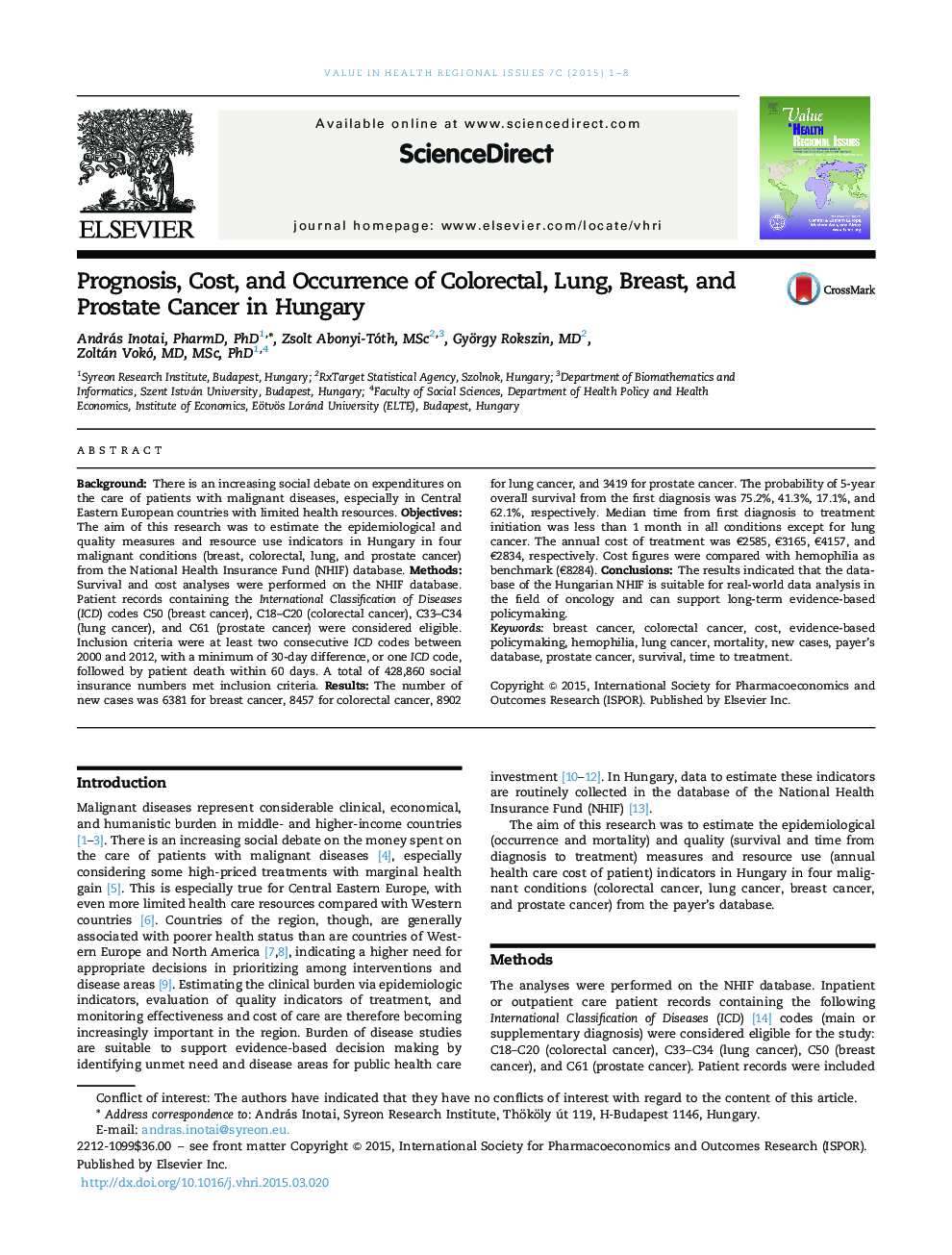| Article ID | Journal | Published Year | Pages | File Type |
|---|---|---|---|---|
| 990088 | Value in Health Regional Issues | 2015 | 8 Pages |
BackgroundThere is an increasing social debate on expenditures on the care of patients with malignant diseases, especially in Central Eastern European countries with limited health resources.ObjectivesThe aim of this research was to estimate the epidemiological and quality measures and resource use indicators in Hungary in four malignant conditions (breast, colorectal, lung, and prostate cancer) from the National Health Insurance Fund (NHIF) database.MethodsSurvival and cost analyses were performed on the NHIF database. Patient records containing the International Classification of Diseases (ICD) codes C50 (breast cancer), C18–C20 (colorectal cancer), C33–C34 (lung cancer), and C61 (prostate cancer) were considered eligible. Inclusion criteria were at least two consecutive ICD codes between 2000 and 2012, with a minimum of 30-day difference, or one ICD code, followed by patient death within 60 days. A total of 428,860 social insurance numbers met inclusion criteria.ResultsThe number of new cases was 6381 for breast cancer, 8457 for colorectal cancer, 8902 for lung cancer, and 3419 for prostate cancer. The probability of 5-year overall survival from the first diagnosis was 75.2%, 41.3%, 17.1%, and 62.1%, respectively. Median time from first diagnosis to treatment initiation was less than 1 month in all conditions except for lung cancer. The annual cost of treatment was €2585, €3165, €4157, and €2834, respectively. Cost figures were compared with hemophilia as benchmark (€8284).ConclusionsThe results indicated that the database of the Hungarian NHIF is suitable for real-world data analysis in the field of oncology and can support long-term evidence-based policymaking.
